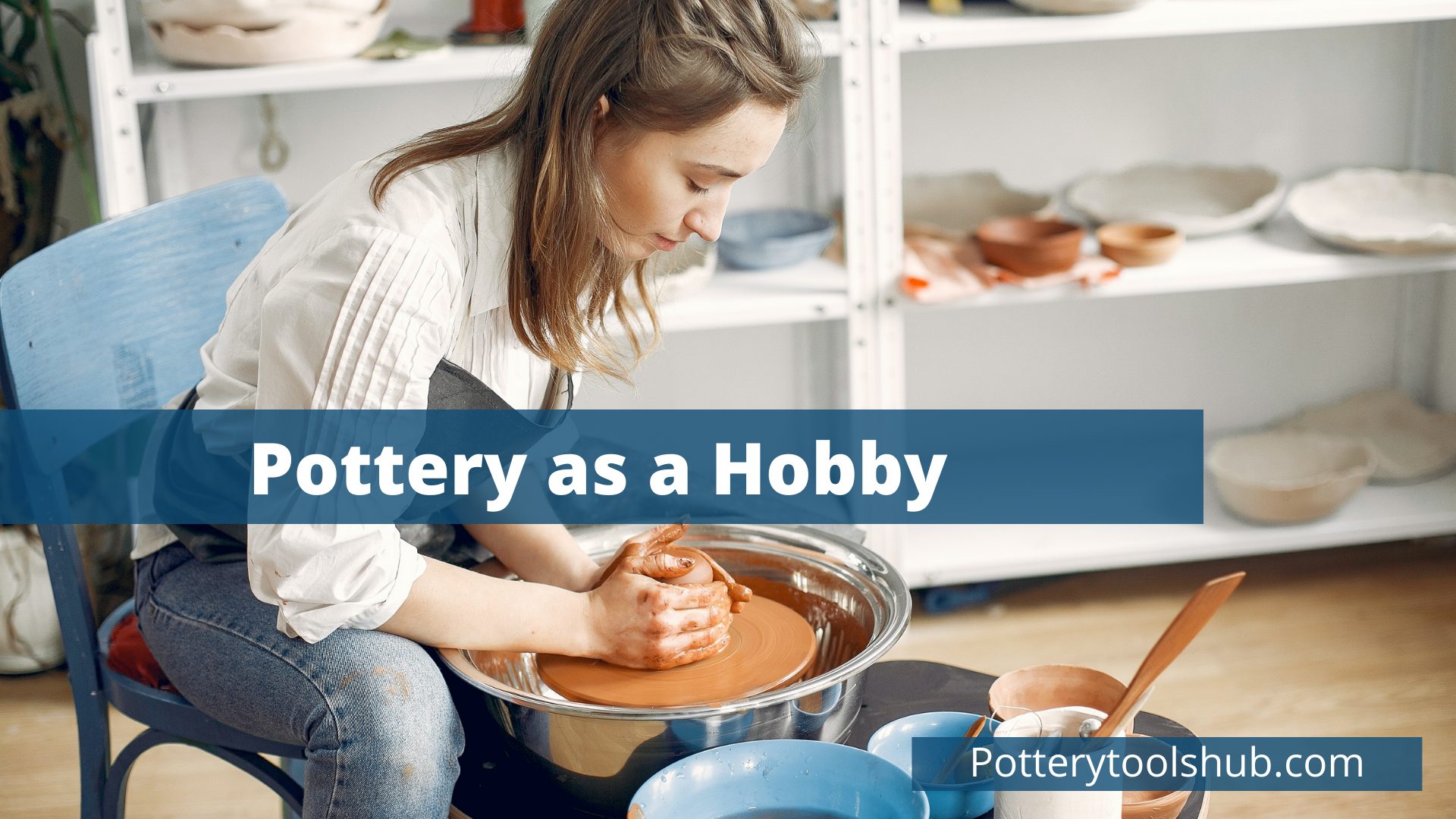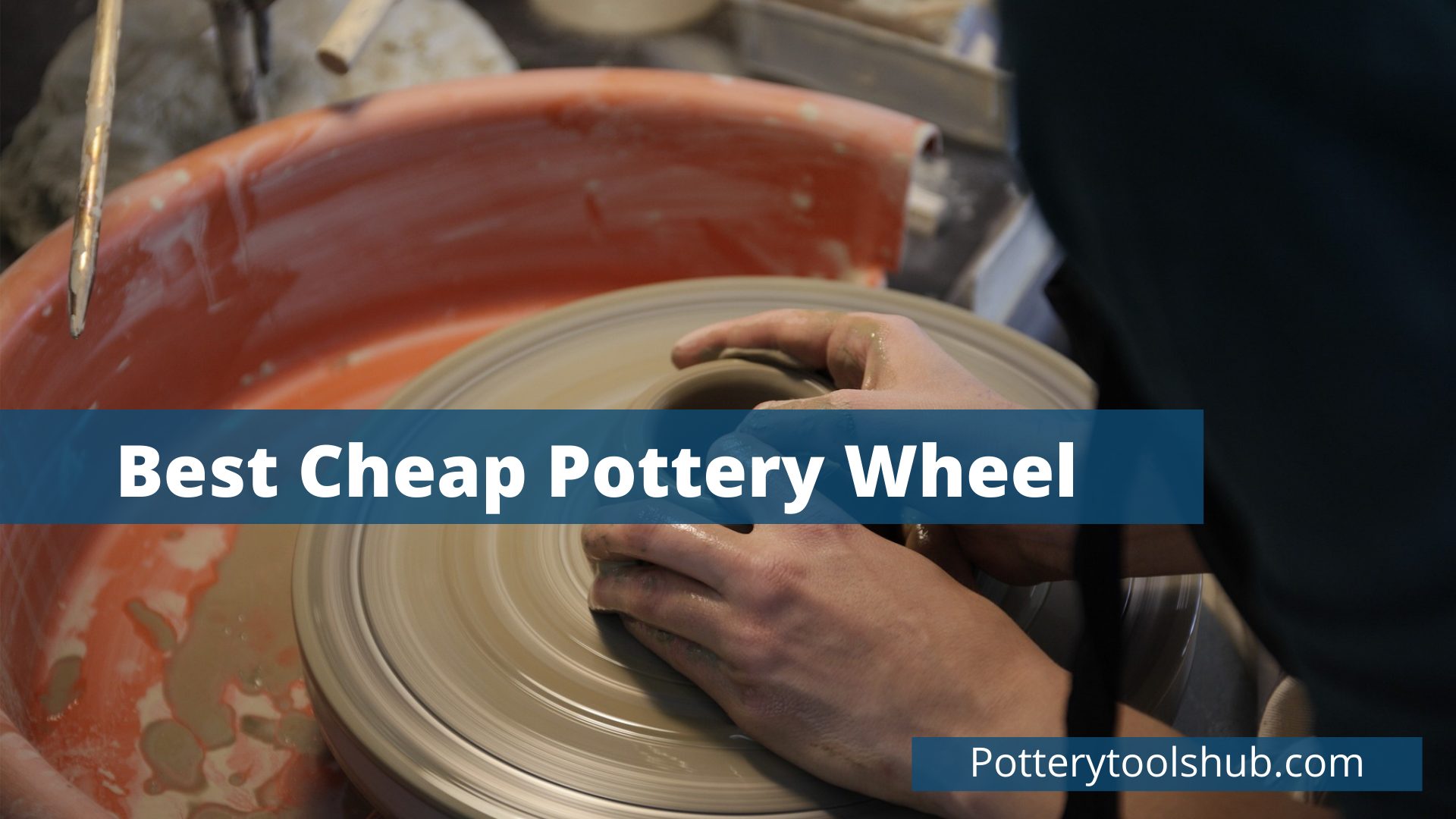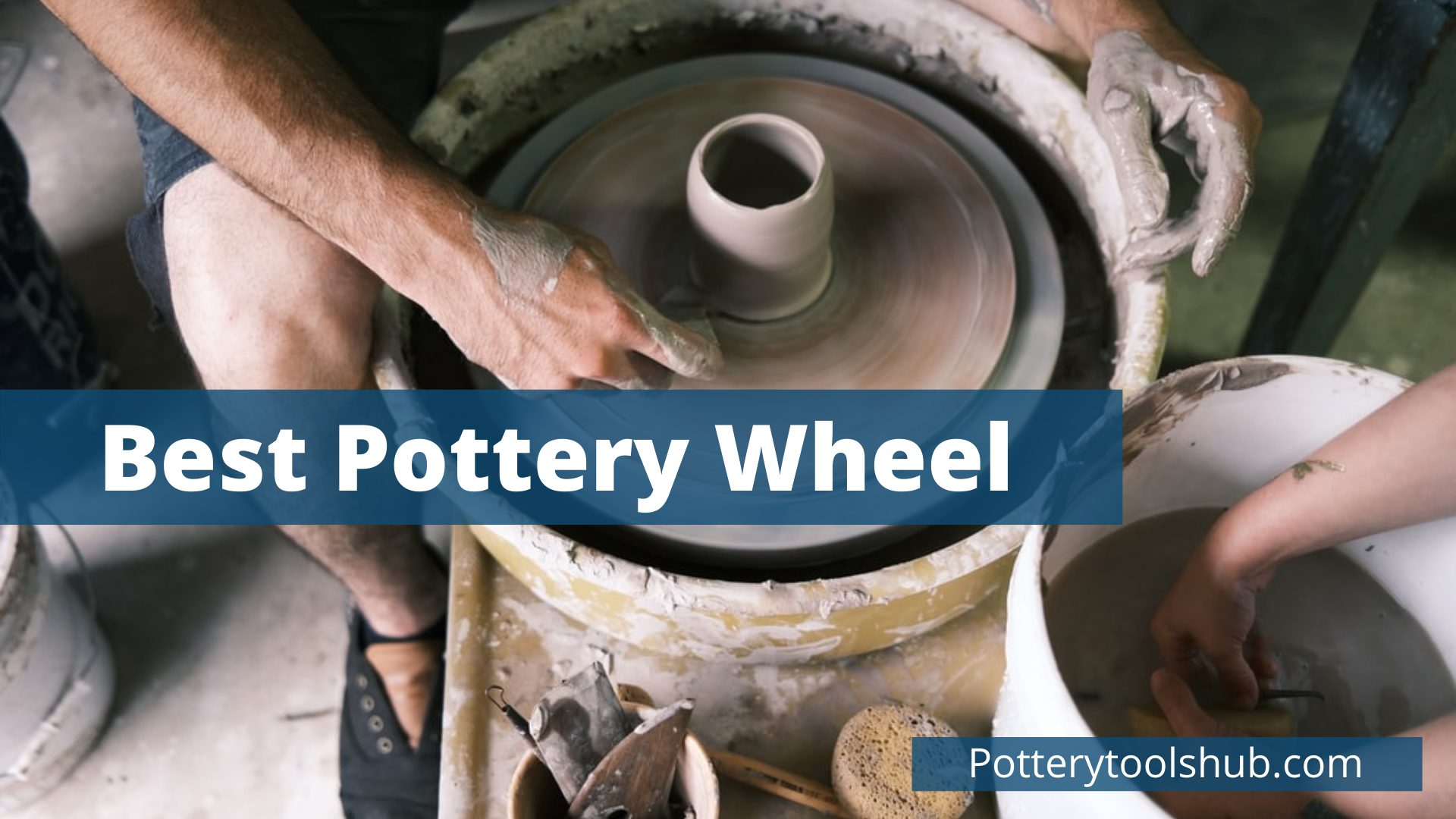If you’re new to pottery, you might be confused about a lot of things. What tools do you need? How can you glaze pottery? Can you glaze pottery at home?
The answer is easy – Yes, you can!
There are three primary ways of glazing at home:
- Using a Pottery Kiln
- Using a DIY (Do it Yourself) Kiln
- Without a Kiln (alternatives to traditional glazing)
On the other hand, if you’re interested in learning more about Pottery as a hobby, we recommend this article: Pottery as a Hobby: What to Expect and What are the Expenses?
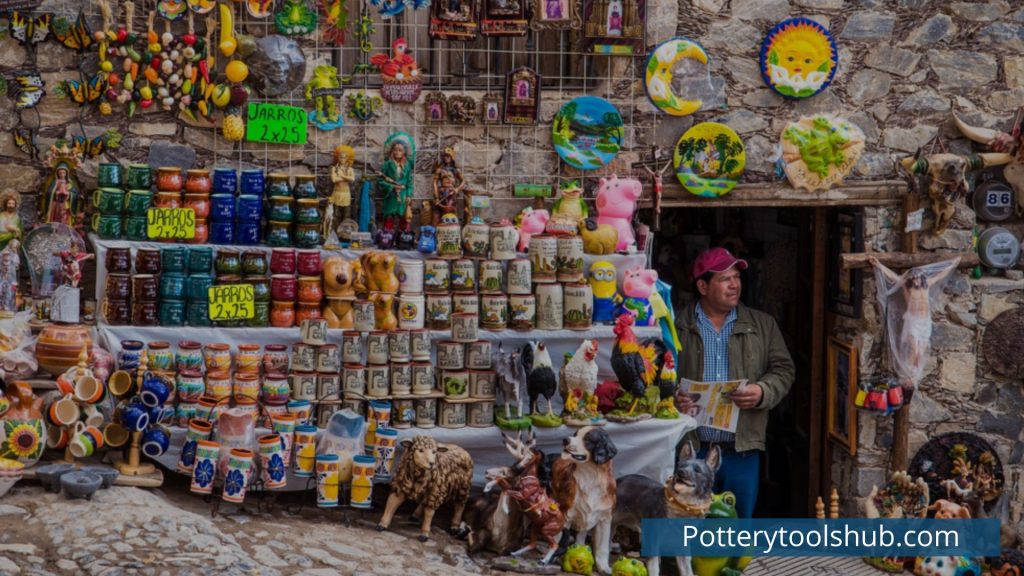
Table Of Contents
What is glazing?
A glaze is a suspension of finely crushed minerals used to coat the surface of ceramic ware by brushing, pouring, dipping, or spraying.
After the glaze dries, the Potter places the pottery piece in a kiln and heats it to a temperature at which the glaze ingredients fuse to form a smooth covering. This process of fusion is known as glaze firing.
Of course, before starting, you’ve got to deal with the clean-up! Here’s an article that might help: How to Clean A Pottery Wheel – A Short and Easy Guide!
What Type of Glaze Should You Use?
There are many facets to glazing pottery, even if you glaze at home. Like any other feature of ceramics, it combines practical, technical, and artistic skills.
Many beginners who want to glaze pottery at home will choose the brushing technique to apply the glaze. Thus numerous companies have made commercially made brushing glazes available to the public.
These glazes differ in color, texture, and appearance. Your choice in glaze depends entirely on your mode of application and your choice of how to glaze. This leads us to the next important topic!
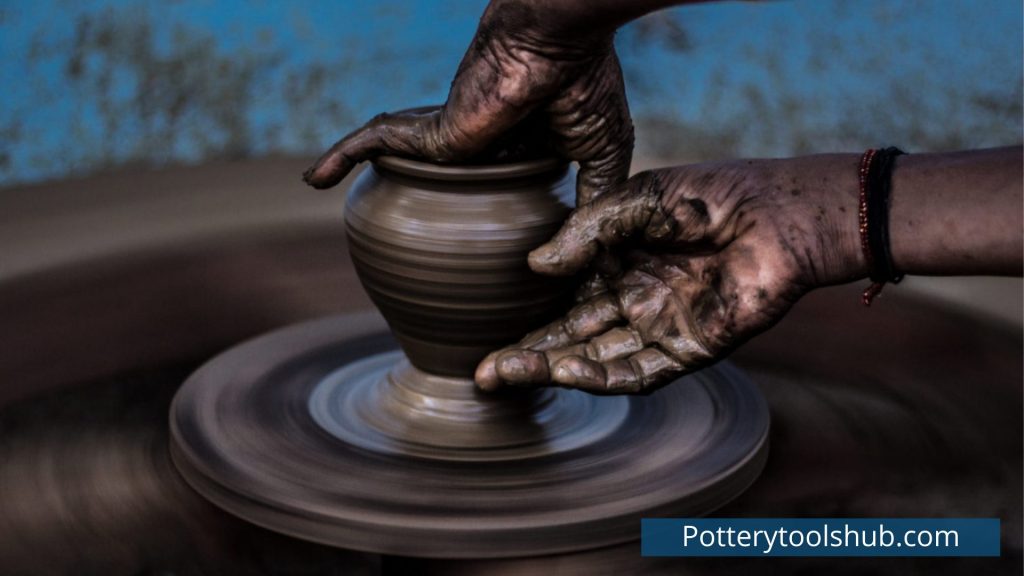
Methods of Glazing
There are multiple ways to glaze pottery at home. The four methods are:
Dipping
Dipping pottery involves submerging it in a container full of glaze. You need to hold the pottery piece in the glaze for around 3 seconds before taking it out.
Dipping is a quick way to cover the piece of pottery with an even coat. Therefore, while producing large quantities of pottery, most professionals prefer this method.
Pouring
Pouring the glaze directly over the pottery piece is also a way to get an even coat. It is also a convenient method of glazing the inside of vases, especially those with narrow necks.
Brushing
This glazing technique uses a brush to apply glaze to ceramics. The brush-on glaze is usually thicker in consistency than dipping glazes. It is formulated in such a way that the brush marks even out when painted on.
Spraying Or Airbrushing
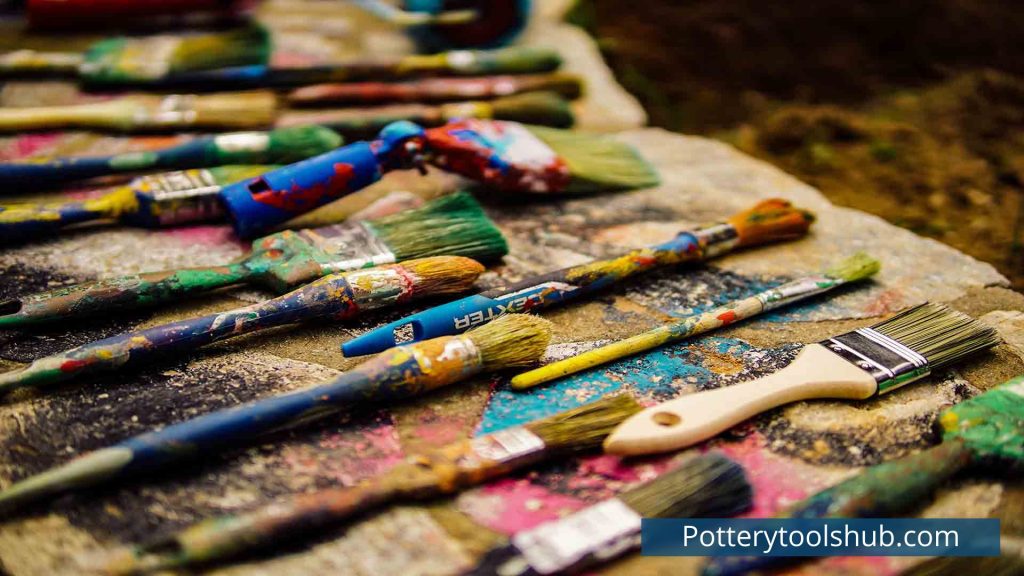
Airbrushing is a method that involves spraying a thin mist of glaze onto the pottery. This is another handy method to cover the pottery with an even coat. It is especially helpful when you want to create a gradient between two colors.
However, this glazing method does require more pieces of equipment than other techniques, so keep that in mind while deciding!
Sponging
Sponges are essential as potters use them during each step of applying the glaze. After applying a couple of base glaze coats, you should let the item dry. After that, you need to apply another glaze color with a sponge to provide texture and finish.
Various sponges, such as sea sponges, will give different textures. They are also cut into various shapes and used as stamps to apply designs. Sponges are additionally helpful in blending colors and giving subtle color changes.
How to Glaze Pottery at Home Using DIY Kilns
Even if you don’t own a kiln, you can still fire pottery and glaze clay pots. The process is, however, more complex without a proper pottery kiln. Still, it is possible. Some people even prefer using these methods, especially for projects with small children.
Of course, before that, you might want to check out this article as reference: Simple Steps of Using a Pottery Wheel (And What Mistakes to Avoid)
These are the main ways you can fire pottery without a kiln:
1. Raku Firing
This method involves glazing bisque ware and then heating it promptly in a raku kiln.
Once the kiln has reached around 1832 Fahrenheit, lift the pottery from the kiln. As the pottery is very hot, you should use metal tongs (called ‘raku tongs’) to lift it.
2. Pit Firing
Pit Firing is a method that involves digging a hole in the ground and filling it with combustible material such as sawdust, wood, leaves, or even dung. You should then place the pottery on the flammable material and cover it with more combustibles.
After this, the hole is set ablaze, and the pit is covered to keep the heat contained inside.
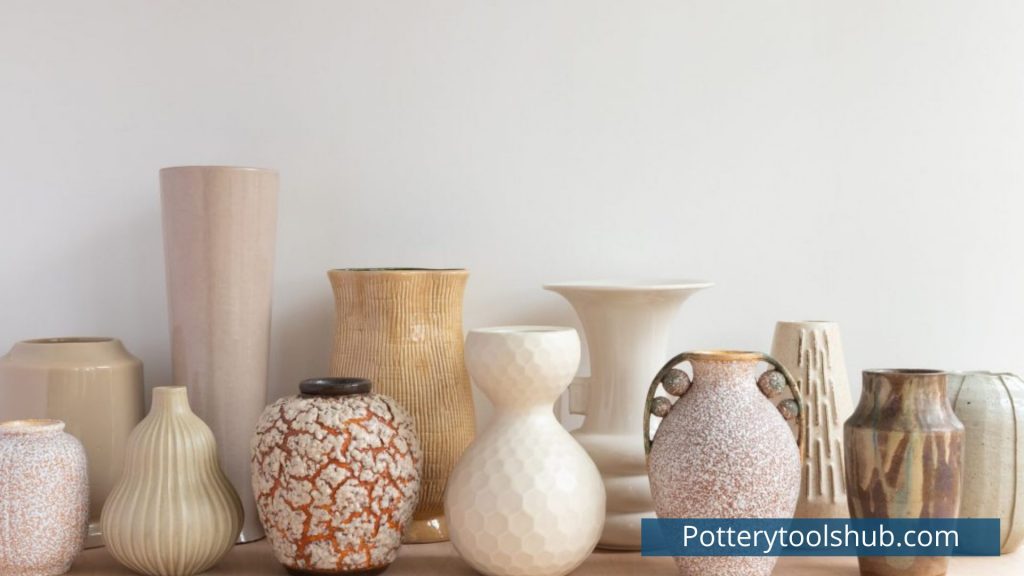
3. Kitchen Oven
A kitchen oven works as a great kiln alternative because it allows the pottery to dry out quickly.
Pottery projects that use a kitchen oven allow you to fire the clay at low temperatures. Just turn the oven to 250 Fahrenheit, put the pottery inside for about an hour, and you’re good to go.
The baking time varies as thicker projects can take up to three hours to finish, but your task is done as soon as the material becomes hard.
Be warned! If kept in the oven for too long, the clay may start to crack
How to Glaze Pottery at Home Without a Kiln
Alternatives to glaze firing are called cold finishing techniques, which use neither glaze nor fire. These methods produce pieces that are not waterproof or food-safe. However, they are great cost-effective decorations!
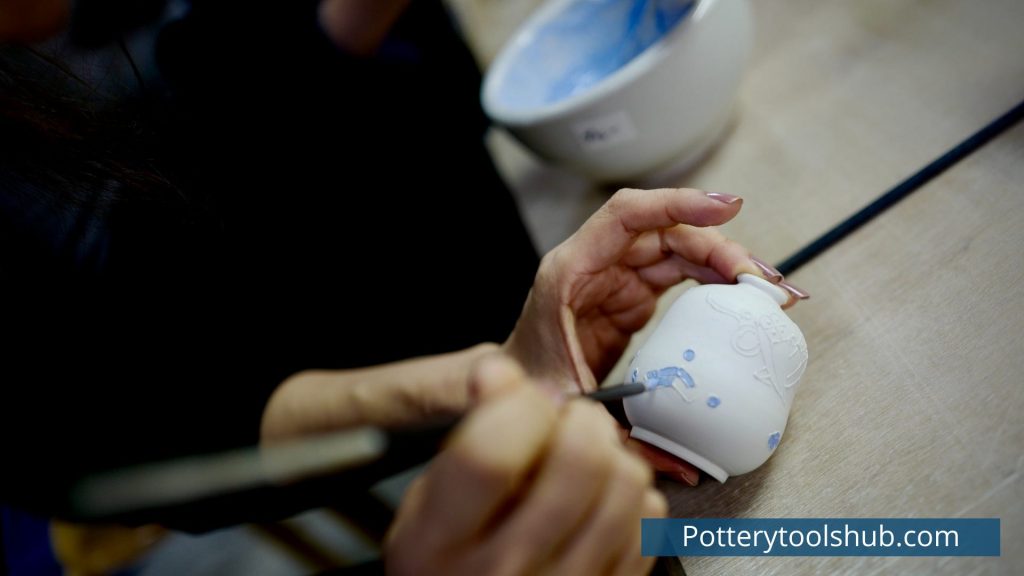
For the decoration to last longer on your piece, you should seal your ceramics with a masonry sealer or modge podge.
Here is a list of some materials that you can use to decorate the surface of the unglazed pottery:
- Spray paint
- Acrylic paint
- Boot Polish and Bronze Powder
- Car Repair Enamel Paint
- Colored pencils
- Paint pens
- Tempera paint (Poster Paint)
- Watercolors
- Wood Stain
Pottery Wheels
Now that we know all we need to know about glazing, it’s time to take a step back and look at pottery wheels, the tool you need to make your art in the first place! Pottery Tools Hub has all the information you need to make your choice.
If you’re just starting out, you can head out to their ‘Ultimate List Of Best Pottery Wheels For Beginners’ to figure out which tool will help you start your journey.
In addition, if you’re happy with your pottery wheel but don’t want your kid to start off too complicated, check out our reviews for Pottery Wheels for Kids for a great alternative.
Conclusion – Have Fun and Glaze Pottery at Home!
Learning how to glaze can be a fascinating process. As mentioned in this article, there are an array of options available, and whatever method you opt for, a stunning glaze finish is easily achievable.
